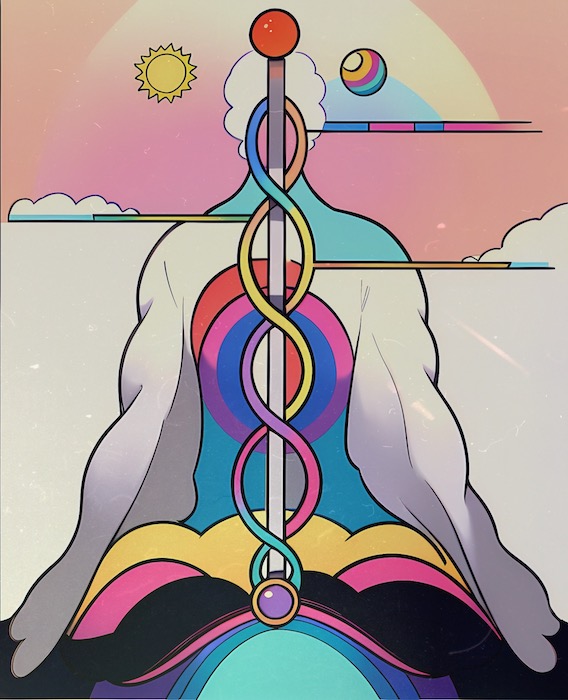
While it’s easy to miss if you’re simply looking for a quick bliss buzz, yoga is a healing path I would qualify as more ferocious than most. Speaking for the Kundalini tradition, it’s actually closer to a Martial Art, having been created for warriors (not monks or householders) during an age of war. Whatever style or path is chosen, yoga is a powerful practice which enlivens us to make the right choices and conquer the ugliness of life. Heightening our sense of peace and inner security, the physical postures we do during practice (asana) prepare and detoxify the physical body in preparation for the hardest work of all – meditation!
Whether moving or still, all aspects of yoga – including the physical postures – are a form of meditation. In the Kundalini tradition we find laughter, whistling, ecstatic dance and all matter of oddities folded into one potent mystery school of tantric transformation. However, most of us practicing in commercial yoga studios lack yoga’s interlocking fabric of cultural community laws. These include knowledge of Ayurveda, Dhamma ‘Teachings of the Buddha’ and of course Dharma ‘Cosmic Law & Order’ aka ‘Right way of Living.’ Yoga is just so much bigger than the postures we think of it as here in the west. In fact, asana is just one amongst seven limbs of yoga:
ASANA — Posture
Yama — Moral Discipline
Niyama — Moral Observance
Pranayama — Breath Control
Pratyahara — Withdrawal of the Senses
Dharana — Concentration
Dhyana — Meditation
Samadhi — Bliss
Learning and eventually practicing the above principles is what your yoga teacher means when they say ‘Real yoga begins off the mat’ or even ‘Marriage is the highest form of yoga’ – a quotation attributed to Yogi Bhajan, who brought Kundalini to the West but seemingly failed at sacred marriage. In this article we’ll focus on the meditative breathing technique (Sanskrit ‘Pranayama’) known as Alternate Nostril Breathing or Nadi Shodhana (Sanskrit for ‘Channel Purification’). Studies have shown the practice is good for the heart, lungs and brain. When used regularly, this breath has been clinically demonstrated to ease stress and anxiety, aid relaxation, lower blood pressure and heart rate and improve brain function and memory. As a practicing yogi of over twenty-five years, Alternate Nostril Breathing is a regular part of my practice – and one of the most accessible breathing techniques I instruct to students in class. In the following sections, we’ll explore the deeper significance the practice has to the constitution of elements in the body, the planetary movement and the masculine and feminine energy, based on insights from Harish Johari’s book Tools for Tantra.

Given that our sense organs serve as windows through which our desires enter, much of our beginner’s yoga practice involves techniques of purification. When the body and mind are clear channels of source, our words and deeds demonstrate integrity. Officially, there are ten nadis (channels) divided into three types of currents – solar, lunar and fire. The solar nadis are situated on the right side of the spine, the lunar nadis on the left side of the spine, and the fire nadis in the central canal inside the spine. The seven chakras situated along the spine become the playground of the five elements (tattvas in Sanskrit, a word meaning ‘Truth’): Akasha (ether or space), Air, Fire, Water and Earth. We are attuned to these same five elements in our fingers correlating to the personal planets. The Lovers Venus and Mars are associated with the thumb and Fire – evidenced by how when we practice the mudra known as ‘Venus Lock’ we interlace our thumbs. Jupiter (Air) corresponds to the index, Saturn (Ether) to the middle finger, Sun (Earth) to the ring finger and and Mercury (Water) to the pinkie.
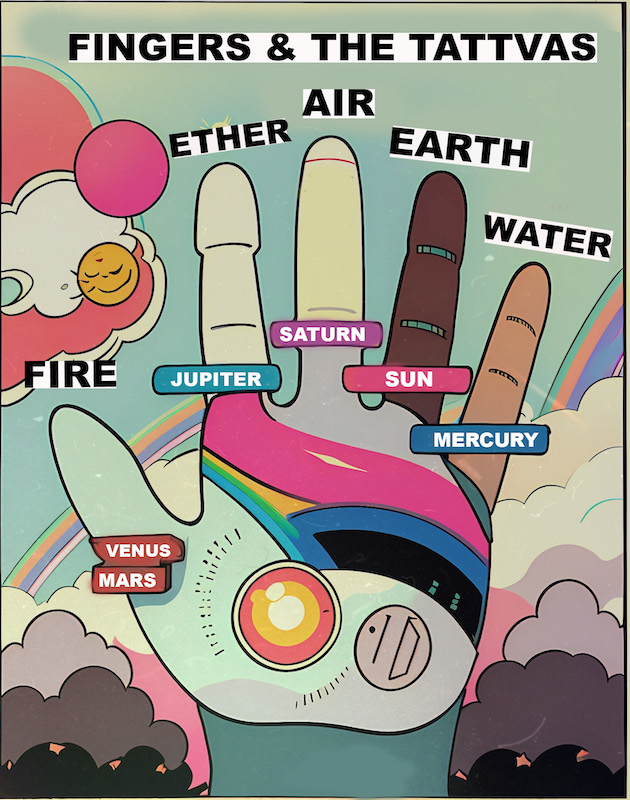
During Alternate Nostril Breathing we are working with the three principal nadis – Pingala, Ida and Sushumna – while breathing in the five elements coinciding with the new and full moon cycles. In one hour we breath 900 breaths, making our nostrils like a steering wheel directing us in the journey of life. Every dawn following the full moon, the descending moon cycle starts, and at the time of dawn the right nostril officiates the day. The ascending moon cycle starts following the night of the new moon, and at the time of dawn the left nostril leads. If you’re curious to learn more, consider acquiring a ‘Prana Calendar’ indicating which nostril should be working on which day. The commencement of each nostril cycle begins with the Earth element, followed by Water, Fire, Air and Akasha.
Depending on our constitution, our alignment (or misalignment) to natural cosmic cycles can therefore either push us toward health, or disease. Toward balance, or imbalance. In that light we find that the nostrils serve as a practical and important indicator of how we can adjust our behavior according to the energy available in our body. For example, moods which occur as a result of excess or lack of particular elements can cause real disturbances. The more Fire – the more anger and bile. Too much Air, overthinking and indecisiveness. That being said each element also nurtures the body – Akasha being the balm for the ears, semen and brain. When the twin hemispheres of the brain harmonize during Sushumna – we enter a clear Ether-dominant meditative chord of balance and harmony which creates an overall sense of peace and calm within.
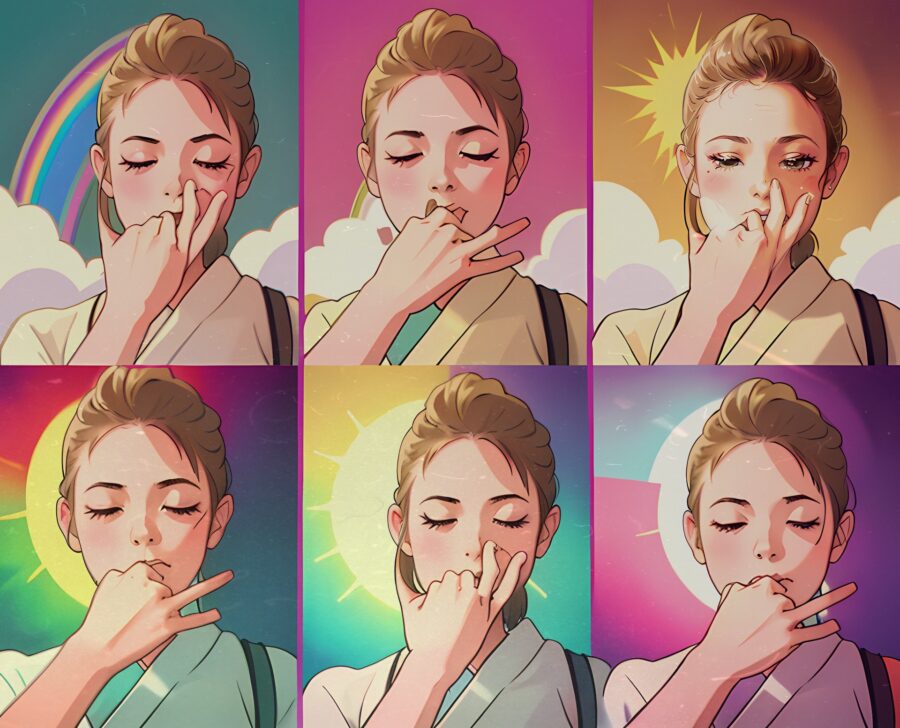
Essentially, the goal of alternate nostril breathing is to draw out and extend the nirvana like Sushumna state we experience each day when our nostril channels Ida (feminine/right-brain) and Pingala (masculine/left-brain) sync up for ten breaths. Every day at dawn and dusk we experience this ‘joining time’ involving integration of our masculine/feminine channels in the body crystallized in the nadis. The Solar (right) nostril known as Pingala is bile-dominated. The lunar (left) nostril known as Ida is mucus-dominated. When both right and left nostrils work simultaneously, we enter the wind-dominant state Sushumna. While Sushumna is not a suitable condition for worldly activities, it is the best nadi for yoga and meditation. In fact, the evolution of the left hemisphere in humans only emerged with the appearance of verbal communication. In animals both hemispheres work in symmetry, possibly one reason some folks view dogs as reincarnated Hindu Gods or at the very least, free of ego.
Not only is our alternate nostril breathing practice designed to work with this Sushumna state, it illuminates the underlying cosmic rhythm of the nostrils themselves, which alternate in dominance left to right according to both the moon cycles and the planetary ruler of the day. When one nostril is dominant, the opposite hemisphere of the brain is also dominant. The nostrils in this way establish our human relationship with the great luminaries – our inner Sun and Moon. When our right nostril is dominant, corresponding to the left/masculine/logical hemisphere of the brain, we are more suited to certain tasks. Activities that require physical strength or mental intelligence are right-nostril jobs, activities that require emotional strength or heart intelligence are left-nostril jobs.
In terms of the nostrils resonance with the planets, the right nostril (masculine/solar) corresponding to the left hemisphere of the brain is connected to the Sun on Sunday, Mars on Tuesday and Saturn on Saturday. In other words, on these days the right nostril works with the ruling planet of the day for one hour before sunrise when it changes and the ruling nostril of the day takes over. The left nostril (feminine/lunar) corresponding to the right hemisphere of the brain is associated with the Moon on Monday, Mercury on Wednesday, Jupiter on Thursday and Venus on Friday. On these days the the left nostril works with the ruling planet of the day for one hour before sunrise. The fact that we are literally breathing in different concentrations of elements based on the movement of heavenly bodies is awe-inducing. Reminding us that yes, ‘As Above So Below.’ But also, ‘As Within, So Without.’ We are miniatures of nature, intricately connected to all living beings in an eternal and binding cosmic web.
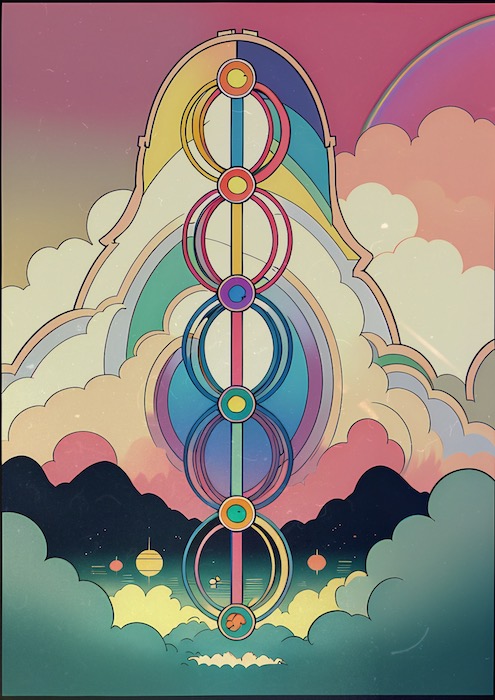
If you’re still feeling skeptical, try one of the following simple tests designed to identify which element is predominant in the body at any given moment. The first test involves breathing out on a mirror or glass and observing the shape of the vapor deposit. If the predominant tattva is Ether, the shape of our breath will be a porous oval, if Air a solid oval, if Fire a triangle, Water a crescent and Earth a square. The second test involves determining the predominant tattva by the taste in the mouth while meditating. A predominance of Akasha creates a bitter taste, Air an astringent taste and Fire a pungent or hot taste. Water is salty and Earth is Sweet.
And on that celestial high note, we’re officially now gearing up for one of the four holiest days of the year – Winter Solstice – a time when we celebrate the light within and die to old versions of ourselves. Called ‘Gateway of the Gods,’ in some traditions, it’s a time when our spiritual connection peaks. Why not snag a new yoga mat designed with seasonal wellness in mind? Introducing the PRO Balance in Solstice Mat, part of a new collection of winter-inspired yoga gear by Manduka. From the Solstice Mat’s elegant and modern two-tone exterior… to rich pinks, purples, reds, deep blues, blacks and greens – these mindfully made mats will have you flowing into starry nights and melting away wintry frosts. Manduka’s firm, durable non-slip mats inspire the warmth and joy of yogic practice amidst the dead of winter. Offering superior support and stability, PRO Balance mats are lifetime guaranteed and built to repel sweat and bacteria. So whether you’re deep in pranayama or practicing your Flying Warrior – with a firm and sleek Manduka mat beneath you – you’re sure to ignite that sacred inner spark!
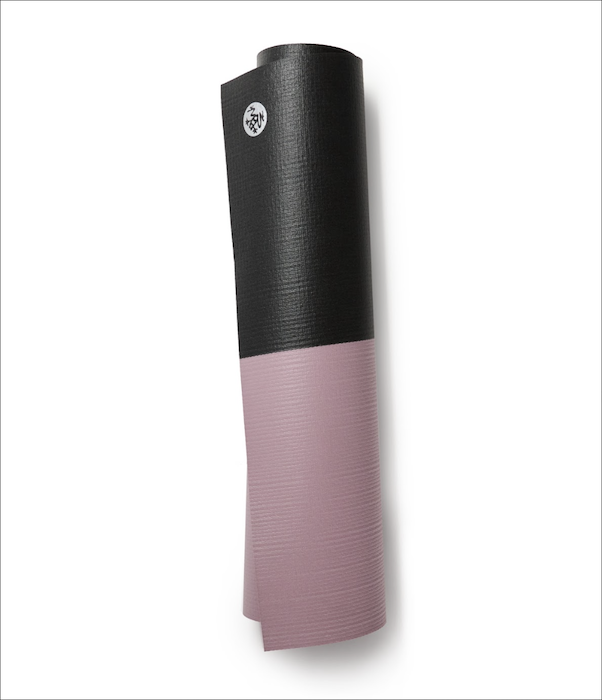
Find it HERE
Watch my short guided TikTok tutorial on Alternate Nostril Breathing HERE
Follow @parvati_slice on TikTok & IG!
Join me in person Mondays 9:30am for Urban Community Yoga in Crown Heights at the Black-Female owned Urban Asanas. Advance sign up HERE
BIBLIOGRAPHY
Tools for Tantra Harish Johari, Vermont: Destiny Books (1986)
“How and why to practice alternate nostril breathing” Medical News Today, published online October 27, 2022

